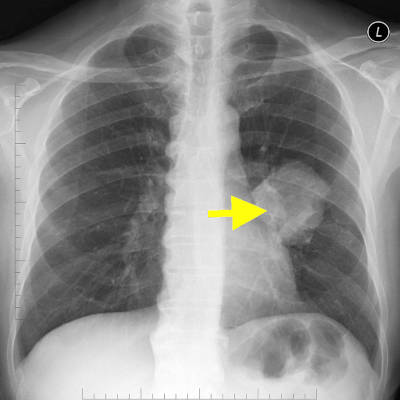
Use tobacco, smoke or vape? Test your cancer IQ.

1. True or False: Among 4.5 million worldwide 2019 cancer deaths, the leading cancer risk factor for both males and females was tobacco use.
True. An August 2022 Lancet study analyzed risk factors associated with 4.5 million 2019 cancer deaths. It found that the leading risk factor among men was tobacco use, accounting for 33.9 percent of life-years lost, 4.5 times higher than the second leading risk factor, alcohol use (7.4 percent).
Tobacco use was also the leading female cancer death risk factor at 10.7 percent, with unsafe sex being the second leading factor (8.2 percent). Worthy of note is that for both sexes the top two risk factors were behavioral, not environmental, occupational or metabolic.
2. True or False: Among 23 different types/categories of cancer, lung cancer (cancer of the lung, bronchus or trachea) is by far the leading cancer killer of both male and female tobacco users.
True. This is a finding of the 2022 Lancet study.
3. True or False: Four types/categories of cancer account for nearly all tobacco use cancer deaths: mouth cancer, throat cancer, larynx cancer (voice box) and lung cancer.
False. While accounting for roughly half of life-years lost by tobacco users in the Lancet study, in addition to cancer of the mouth, throat, larynx and lungs, tobacco use has been proven to cause cancer of the bladder, kidney, liver, stomach, pancreas, colon, rectum, and cervix, as well as acute myeloid leukemia (National Cancer Institute).
4. True or False: Tobacco and tobacco smoke contain a complex mixture of over 9,500 chemical compounds, many of which are hazardous to human health. A total of 83 cancer-causing chemicals (carcinogens) have so far been identified in tobacco products – 37 in unburned tobacco and 80 in tobacco smoke.
True. This is the primary finding of a May 25, 2022 review published in Food and Chemical Toxicology. It also found that “No clear decreasing trends were observed for any of these carcinogens in recent years.”
5. True or False: Nicotine, the most abundant chemical in cigarettes, smokeless tobacco products, and e-cigarette liquid, is not a factor associated with the development or spreading (metastasis) of cancer.
False: As detailed in a June 2022 WhyQuit study review, nicotine has been found to induce carcinogenic effects (June 2022) including the development of gastric (May 2022) and breast cancer (May 2022), to promote metastatic colonization of lung cancer cells (April 2022), and is the source for tobacco-specific nitrosamines (TSNAs) including NNA, NNK and NNN (May 2022).
While the overall health risks associated with e-cigarette use are believed to be orders of magnitude less than those associated with cigarette smoking, in that it normally takes roughly three decades before most smokings health risk consequences become noticeable, it could take another decade or so before science develops a basic appreciation of the most pronounced long-term vaping consequences.
Even then, given the tremendous variation in devices, flavorings, ingredients, and impurities, we could see a risk spectrum so broad as to make risk generalizations dangerous.
As detailed by a 2003 IARC report, how many of the following 81 cancer-causing chemicals identified in mainstream cigarette smoke could you have named?
- Acetaldehyde
- Acetamide
- Acrylamide
- Acrylonitrile
- 2-Amino-3,4-dimethyl-3H-imidazo[4,5-f]quinoline (MeIQ)
- 3-Amino-1,4-dimethyl-5H-pyrido [4,3-b]indole (Trp-P-1)
- 2-Amino-l-methyl-6-phenyl-1H-imidazo [4,5-b]pyridine (PhlP)
- 3-Amino-l-methyl-5H-pyrido [4,3-b]indole (Trp-P-2)
- 2-Amino-3-methyl-9H-pyrido[2,3-b]indole (MeAaC)
- 2-Amino-6-methyldipyrido [1,2-a:3',2'-d] imidazole (Glu-P-1)
- 2-Amino-9H-pyrido[2,3-b]indole (AaC)
- 4-Aminobiphenyl
- 2-Aminodipyrido[1,2-a:3',2'-d]imidazole (Glu-P-2)
- 0-Anisidine
- Arsenic
- Benz[a]anthracene
- Benzene
- Benzo[a]pyrene
- Benzo[b]fluoranthene
- Benzo[j]fluoranthene
- Benzo[k]fluoranthene
- Benzo[b]furan
- Beryllium
- 1,3-Butadiene
- Cadmium
- Catechol (1,2-benzenediol)
- p-Chloroaniline
- Chloroform
- Cobalt
- p,p'-DDT
- Dibenz[a,h]acridine
- Dibenz[a,j]acridine
- Dibenz(a,h)anthracene
- 7H-Dibenzo[c,g]carbazole
- Dibenzo(a,e)pyrene
- Dibenzo(a,i)pyrene
- Dibenzo(a,h)pyrene
- Dibenzo(a,i)pyrene
- Dibenzo(a,l)pyrene
- 3,4-Dihydroxycinnamic acid (caffeic acid)
- Ethylbenzene
- Ethylene oxide
- Formaldehyde
- Furan
- Glycidol
- Heptachlor
- Hydrazine
- Indeno[1,2,3-cd]pyrene
- IQ 92-Amino-3-methyl-3H-imidazo[4,5-f]quinoline)
- Isoprene
- Lead
- 5-Methyl-chrysene
- 2-Naphthylamine
- Nitrobenzene
- Nitrogen mustard
- Nitromethane
- 2-Nitropropane
- N-Nitrosodi-n-butylamine (NDBA)
- N-Nitrosodi-n-propylamine (NDPA)
- N-Nitrosodiethanolamine (NDELA)
- N-Nitrosodiethylamine (DEN)
- N-Nitrosodimethylamine (DMN)
- N-Nitrosoethylmethylamine (NEMA, MEN)
- 4-(N-Nitrosomethylamino)-1-(3-pyridinyl)-1-butanone (NNK)
- N'-Nitrosonornicotine (NNN)
- N-Nitrosopiperidine (NPIP, NPP)
- N-Nitrosopyrrolidine (NPYR, NPY)
- Polonium-210
- Propylene oxide
- Radon 222
- Safrole
- Styrene
- Tetrachloroethylene
- o-Toluidine (2-methylaniline)
- Trichloroethylene
- Urethane - carbamic acid
- Urethane - ethyl ester
- Vinyl acetate
- Vinyl chloride
- 4-Vinylcyclohexene
- 2,6-Xylidine (2,6-dimethylaniline)
 John R. Polito received his JD from the University of South Carolina School of Law in 1985, where he graduated Wig & Robe. He is a former 3-pack-a-day thirty-year smoker and the 1999 founder of WhyQuit. A nicotine cessation educator since 2000, John mentored under Joel Spitzer for two decades, presenting more than 100 live nicotine dependency recovery programs modeled after Joel's programs. He is the author of "Freedom from Nicotine - The Journey Home," "Smart Turkey," and 6 peer-reviewed journal articles. John is the founder and director of Turkeyville, a 15,000-member Facebook support group exclusively for cold turkey quitters. Email: johnpolito54@gmail.com
John R. Polito received his JD from the University of South Carolina School of Law in 1985, where he graduated Wig & Robe. He is a former 3-pack-a-day thirty-year smoker and the 1999 founder of WhyQuit. A nicotine cessation educator since 2000, John mentored under Joel Spitzer for two decades, presenting more than 100 live nicotine dependency recovery programs modeled after Joel's programs. He is the author of "Freedom from Nicotine - The Journey Home," "Smart Turkey," and 6 peer-reviewed journal articles. John is the founder and director of Turkeyville, a 15,000-member Facebook support group exclusively for cold turkey quitters. Email: johnpolito54@gmail.com

